by Chère Reade-Edwards
Dirty power: An Earth battery build
Don’t forget to submit your creations or post online and tag @natsatclub
Overview
We are looking at generating an electrical current with soil being the electrolyte and two disparate metals as electrodes.
Electricity is created by the presence and flow of electrons from positive to negative points. In this case, zinc gives up electrons more easily than copper and the damp soil contains free electrons. The reaction of the zinc with the copper and the presence of the free electrons, results in a current.
Materials needed
- Eight small containers (an ice tray or similar)
- Soil (damp)
- Eight galvanised or iron screws/nails/rods
- Copper wire (can be found in old cable such as old extension cords)
- Sandpaper or wire wool
- Small light bulb with two wire legs, voltmeter or anything that will respond to a current of about 5 volts (Suitable light bulbs are often found in Christmas lights, fairy lights and/or torch lights)
Activity part one – Earth Battery Build
If your copper is in a cable or wires, remove the insulation. Give the copper a gentle rub with sandpaper or wire wool in case it has a coating. If the copper wire is very thin, you may want to twist a few strands together to make a thicker wire.
Cut seven pieces of copper wire each 10cm to 15cm long. Wrap a length of copper wire around the top of each screw/nail, except for one.
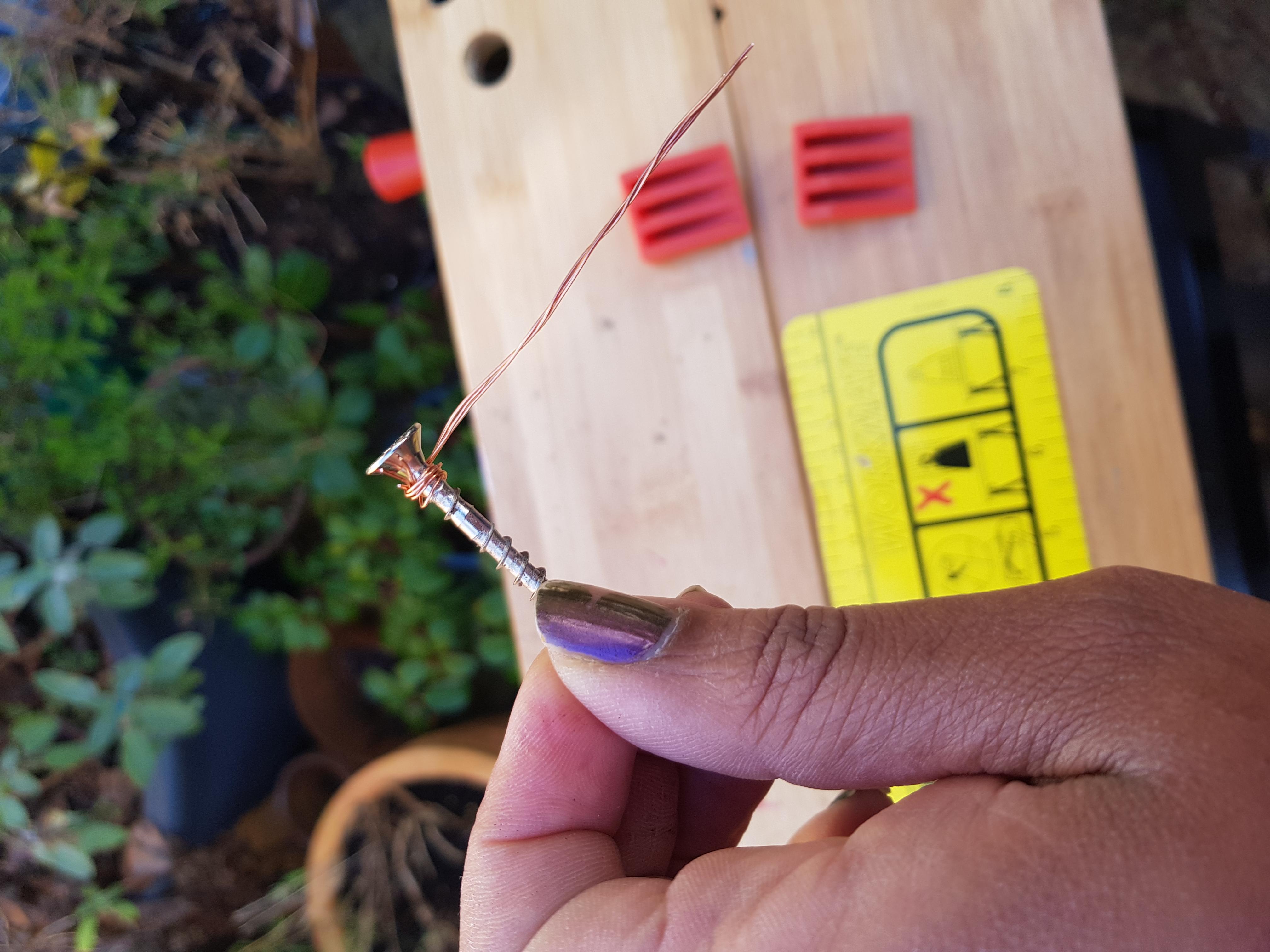
Fill your cells with soil and dampen with a little water.
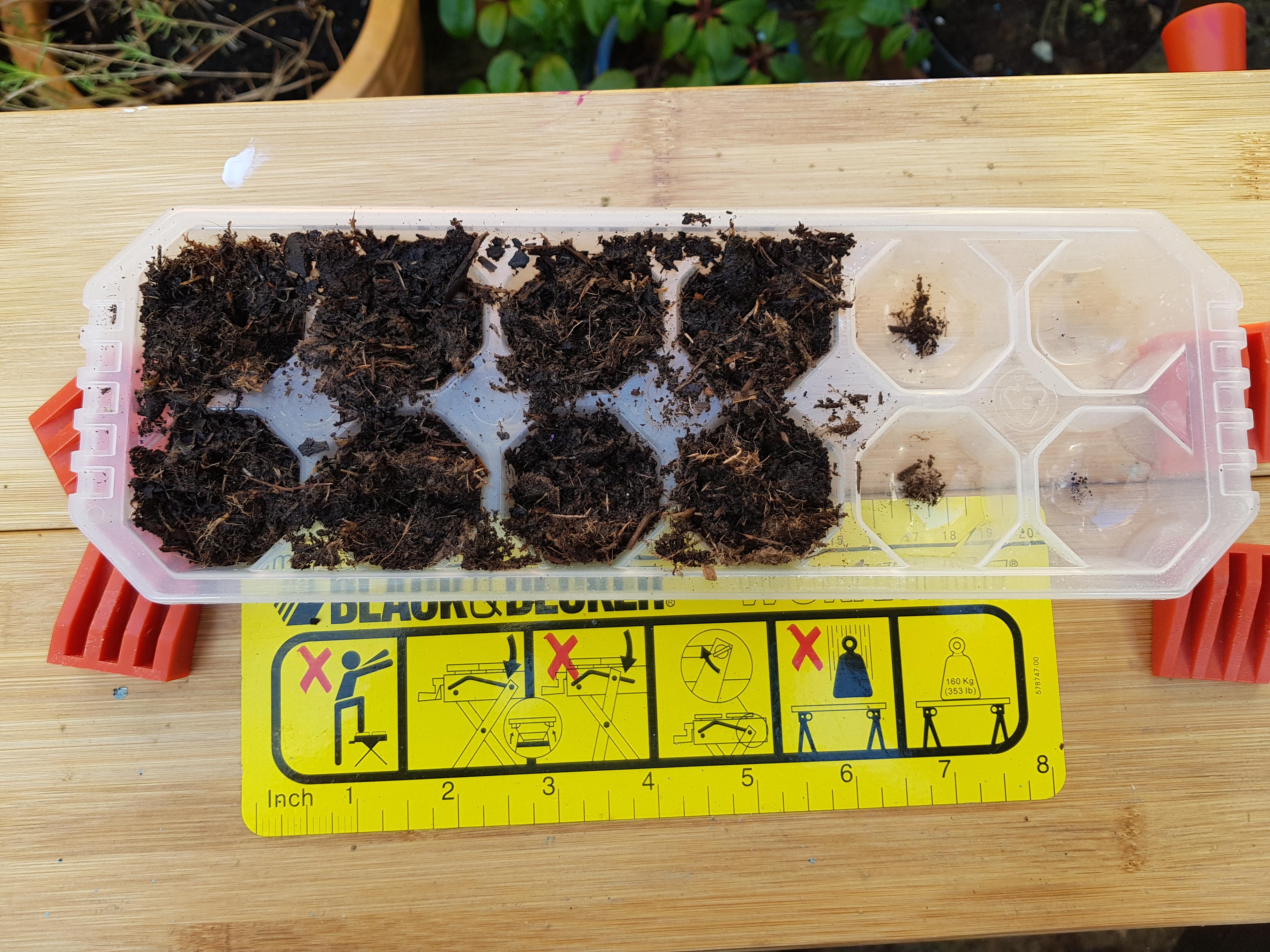
Push a copper-wrapped screw/nail into one cell of soil and the loose copper wire end into the adjacent cell of soil.
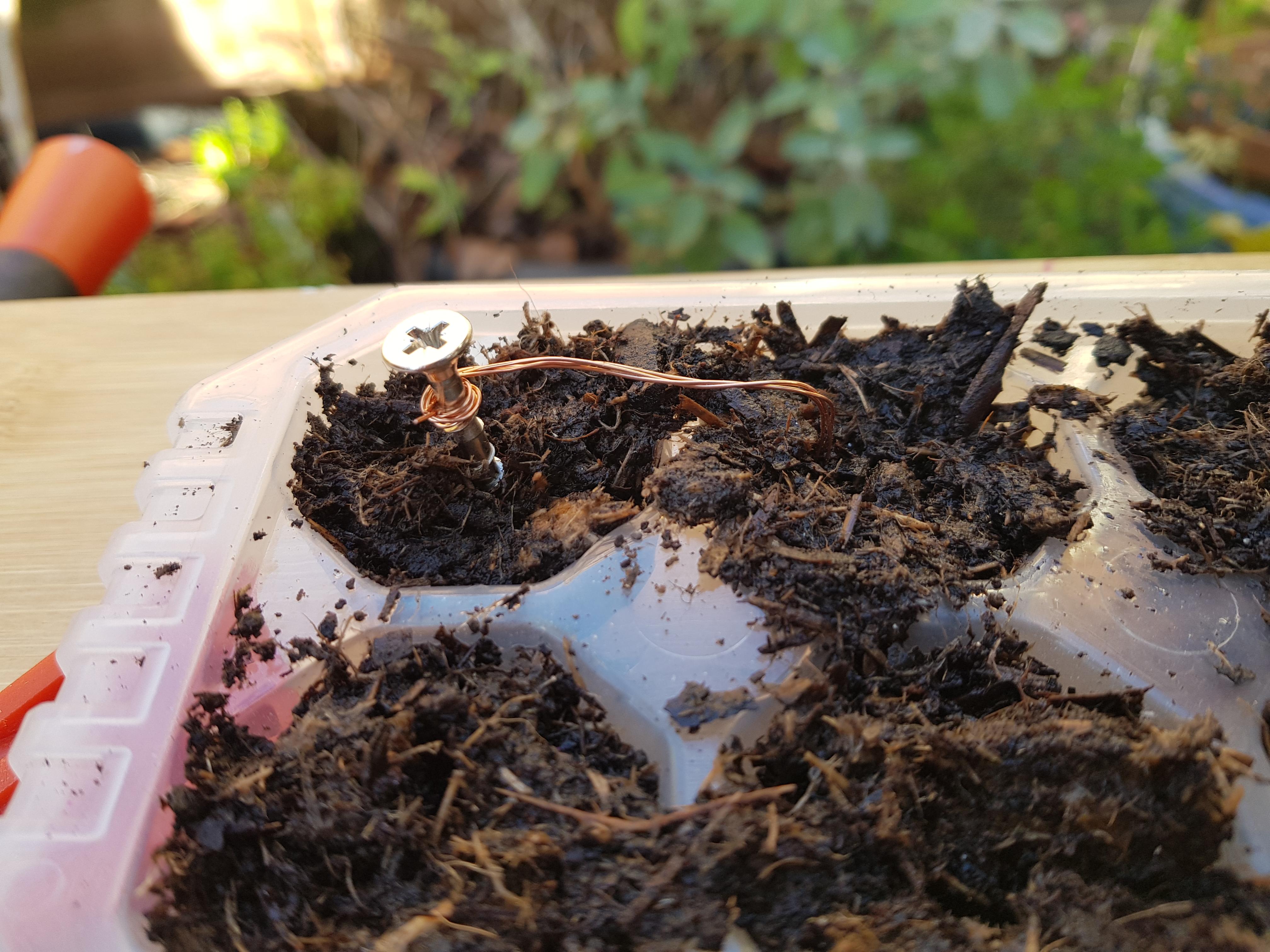
In the same cell of soil as the copper wire end, push in the next copper-wrapped screw/nail and continue to connect the cells in this way, until the screws/nails are arranged in a U formation.
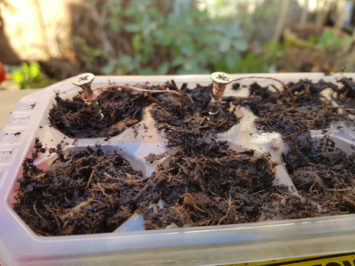
This means there should be two adjacent cells that are not connected.
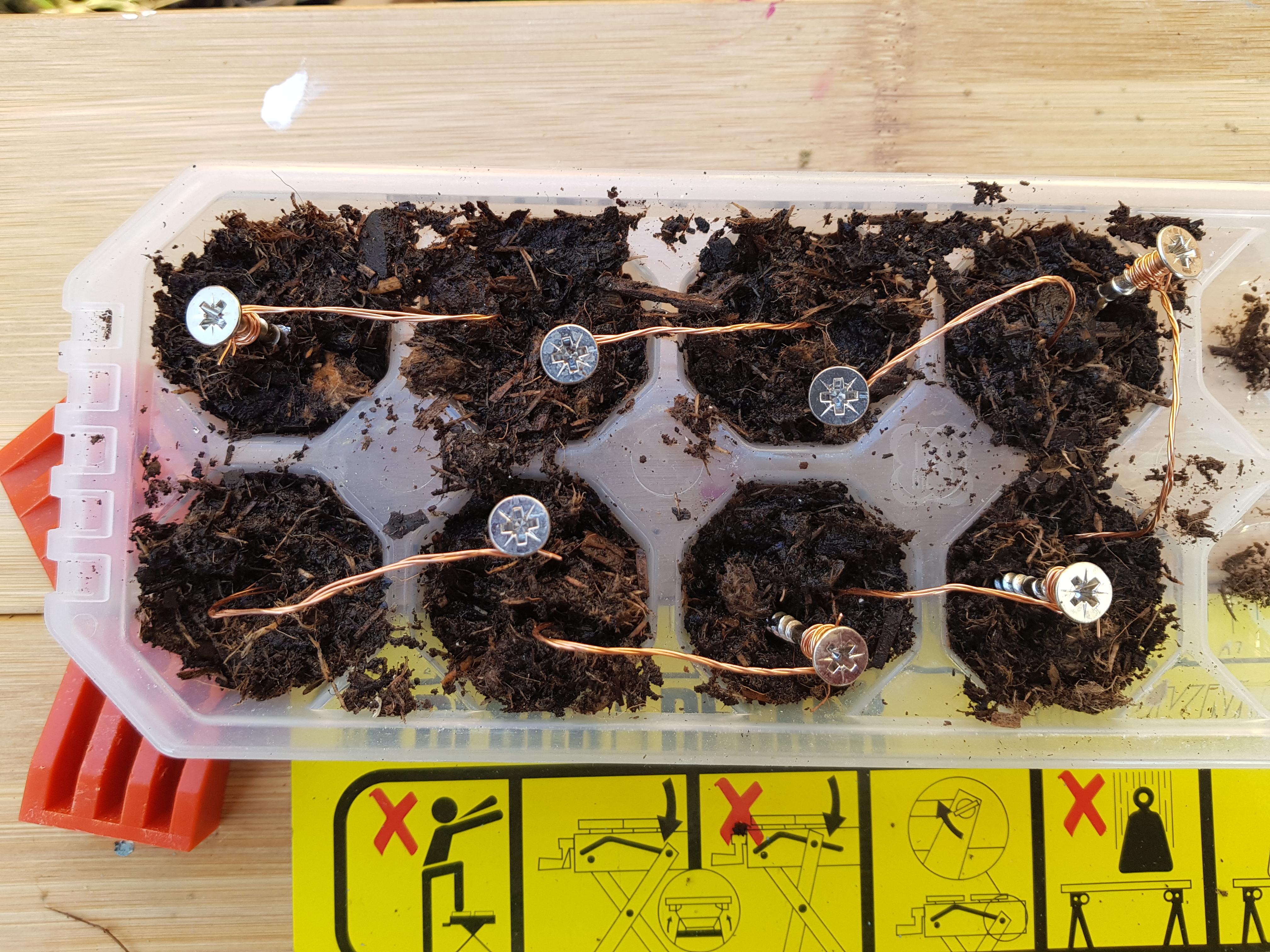
In the cell with just a copper wire inserted, insert the one screw/nail that no copper was attached to. In the adjacent unconnected cell, insert a loop of copper.

Using the single screw/nail and the copper wire loop as your contacts, close the circuit with your bulb, voltmeter or any other appropriate device that has two connection points and will show that a current is flowing.

You can have a play with varying numbers of cells. Can you make it work with one cell?
Activity part two – Treasure Hunt
Try finding dull grey washers around the home. These tend to be zinc coated (i.e. galvanised) or other metal components that look similar. Then, find electrical wires for connections, perhaps by disassembling an electrical item that no longer works, like a lamp.
Take some British coins, one or two pence pieces pre 1992 work best. You can give them a gentle rub with sandpaper. Alternatively, use exposed copper wires, rubbed with sandpaper and then plaited together, or another suitable copper item.
Gather together some cups. Aluminium cans, PET bottles, yoghurt pots or any similar containers work also. These will be your cells. Fill at least ¾ full with salt water, starting with tablespoon of any salt found in the kitchen to two cups of tap water.
Using the electrical wires attach a zinc item to a copper item, place the zinc end in one cell and the copper end in an adjacent cell and continue as in the earth battery set up. Thus, the cells will be connected with each containing one zinc and one copper item, with the exception of the first and last cell. In the unconnected cell with the copper, place a zinc item on an electrical wire and in the unconnected cell with the zinc, place a copper item on an electrical wire. Using the free ends of the electrical wires, connect an LED light bulb and see if you have current.
Play around with the number of cells and the concentration of the salt solutions. You can also have a play with various salts if you can find different salts at home.
Remember to periodically rub your metals with sandpaper or something abrasive, to remove coating or oxidation that has developed
Thank you for taking part in the Kingston University Science&Engineering Saturday Club Workshop.
Submit pictures of your Earth Battery or post online and tag @natsatclub
Resources & References
What Metals Make Good Conductors of Electricity?
Why Is Copper a Good Conductor of Electricity?
Contributed by Chère Reade-Edwards, Kingston University London Science&Engineering Saturday Club
Chère Reade-Edwards is a Forensic and Environmental Scientist who leads Kingston University’s Science, Technology, Engineering and Maths (STEM) outreach work including coordinating the Kingston University branch of the National Science&Engineering Saturday Club
“I feel the Saturday Club develops the Club members curiosity further and allows them to investigate different areas of STEM to what they would experience at school.”